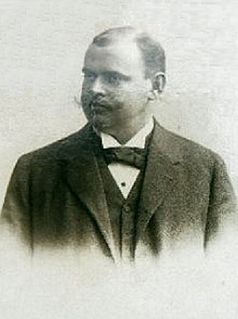
Stewart Granger was an English film actor, mainly associated with heroic and romantic leading roles. He was a popular leading man from the 1940s to the early 1960s, rising to fame through his appearances in the Gainsborough melodramas.
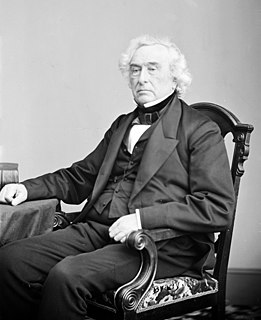
Francis Granger was a Representative from New York and United States Postmaster General. He was a Whig Party vice presidential nominee in 1836 and is the only person to ever lose a contingent election in the U.S. Senate for Vice President.

Lynne McGranger is an Australian actress best known for her role as Irene Roberts on soap opera Home and Away. She is currently the second-longest serving cast member after original Ray Meagher. She joined the series in 1993, taking over from actress Jacqui Phillips who originally portrayed the character of Irene in 1991 and 1992. As of 2018, McGranger is the longest serving female cast member of a television soap opera in Australia, and second longest serving actor in the series behind her H&A co-star Ray Meagher.
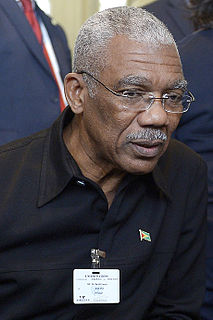
Brigadier David Arthur Granger is a Guyanese politician and retired military officer who has been President of Guyana since 2015. He served for a time as Commander of the Guyana Defence Force and subsequently as National Security Adviser from 1990 to 1992. He was Leader of the Opposition in the National Assembly of Guyana from 2012 to 2015.

Labrador is a suburb located on the Gold Coast in Queensland, Australia. At the 2006 Census, Labrador had a population of 15,391, and grew to 16,402 at the 2011 Census. The suburb overlooks the Gold Coast Broadwater to the east and Southport on the southern border.

St Peter's Catholic School, colloquially known as St Peter's, is a comprehensive secondary school in Guildford, Surrey, England. St Peter's receives Surrey County Council funding and is eligible for educational grants, parent-teacher association funding and the Diocesan funding, having approved voluntary aided status.
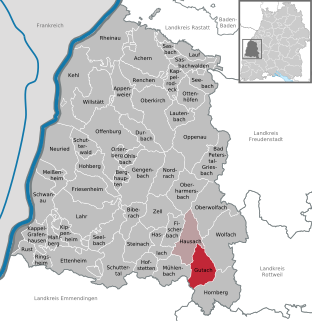
Gutach is a municipality in the district of Ortenau in Baden-Württemberg in Germany.

La Grange is a city in Fayette County, Texas, United States, near the Colorado River. It is located between Houston and Austin on Texas State Highway 71. The population was 4,641 at the 2010 census, and in 2015 the estimated population was 4,712. La Grange is the county seat of Fayette County.

Blindekuh is an operetta written by Johann Strauss II on a libretto by Rudolf Kneisel. It was first performed in Vienna at the Theater an der Wien on 18 December 1878, its composition delayed by the death of Strauss' wife, Jetty Treffz. The overture was performed earlier at a charity event. The first run lasted sixteen performances, followed by performances in Hungary. The overture established itself in the repertoire of many orchestras and is often performed nowadays. A concert performance in 2019 of the opera with the Sofia Philharmonic and Chorus with soloists and conducted by Dario Salvi proved a success.
Leonhard "Leo" Peukert was a prolific German film actor and film director, appearing in more than a hundred and fifty productions between 1910 and his death in 1944. While occasionally he played a leading role in his early years, such as the comedy The Happy Journey (1924), he mostly appeared as a character actor. Peukert was also a film director, making eleven short and feature films during the silent era.

Wilhelm Hasemann was a German genre painter and illustrator.

Marie Jensen was a German portrait painter.
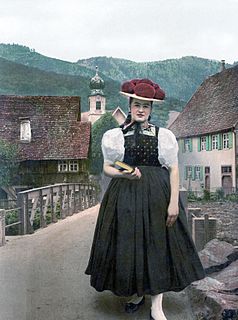
A Bollenhut is a formal headdress worn since c.1750 by Protestant women as part of their folk costume or Tracht in the three neighbouring Black Forest villages of Gutach, Kirnbach and Hornberg-Reichenbach. With its woollen pompoms, the picturesque-looking red Bollenhut has become a symbol of the Black Forest as a whole, despite its very local origins. The red pom-poms and white brim of the Bollenhut also is said to have inspired the top layer of the Black Forest Cake.

Three Waiting Maids is a 1925 German silent comedy film directed by Carl Boese and starring Hanni Weisse, Maly Delschaft and Bruno Kastner. It was remade in 1932 as Mrs. Lehmann's Daughters.
Sabine Impekoven (1889–1970) was a German film actress of the silent era. She was married to the actor Leo Peukert and appeared alongside him in several films. She was the sister of Toni Impekoven.

Conrad Dreher (1859–1944) was a German stage actor. He also appeared in several silent films.

The Farrenkopf, also known as the "Rigi of the Central Black Forest" is a mountain with extensive views in the Black Forest near the town of Hausach in the Kinzig valley.


